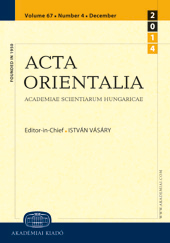“Home Afar”: The Life of Central European Jewish Refugees in Shanghai During World War II
“Home Afar”: The Life of Central European Jewish Refugees in Shanghai During World War II
Author(s): Péter VámosSubject(s): Jewish studies, WW II and following years (1940 - 1949)
Published by: Akadémiai Kiadó
Keywords: Jewish refugees; Shanghai;
Summary/Abstract: Since its opening to the West in 1843, Shanghai had served as destination for four waves of Jewish immigration. The first Jews to settle in China were Sephardim from Baghdad, who migrated eastward in the second half of the nineteenth century. The Sassoons, Kadoories, Hardoons, Ezras, and Abrahams became wealthy merchants, and soon acquired British citizenship. The second group consisted of Russian Ashkenazim who escaped the pogroms and the civil war following the Bolshevik Revolution. They were considered as the 'middle class' of the Jewish community in Shanghai. The third group of German and Austrian (and in smaller numbers Hungarian, Czechoslovakian and Romanian) Jews, numbering over 15,000, barely escaped the Nazi terror in the late 1930s. The fourth group consisted of about 1000 Polish Jews, including the only complete European Jewish religious school to be saved from Nazi destruction, the Mirrer Yeshiva. The International Settlement of Shanghai seemed a viable option for the desperate refugees; this in spite of the fact that the Sino-Japanese War broke out in 1937, and the Japanese, allies of Nazi Germany, occupied parts of the city. Nevertheless, in contrast to the German plan of Entjudung, the Japanese wanted to make use of alleged Jewish wealth and influence for the benefit of Japan's New Order. The official Japanese policy towards Jews stated that although Japan should avoid actively embracing Jews who had been expelled by her allies denying Jews entry would not be in the spirit of the empire's long-standing advocacy of racial equality. As a result of this policy, between the fall of 1938 and the winter of 1941, about 20,000 refugees travelled to Shanghai, their temporary home afar. During the three-year period between 1938 and December 1941 most newcomers managed more or less to integrate into Shanghai's economy, despite the fact that they had come to Shanghai out of political necessity, and not for the economic prospects. Following the outbreak of the War in the Pacific and the Japanese occupation of all sections of Shanghai, the economic situation of the refugees significantly worsened. Furthermore, as stability in Shanghai was the most important priority for the Japanese, on February 18, 1943 the military authorities issued a proclamation about the establishment of a restricted area - or ghetto, as the refugees used to call it - for stateless refugees in Hongkou, where they were confined until the Japanese surrender in August 1945. The end of the war opened up the possibility for the refugees of leaving Shanghai. However, when they were informed about the Holocaust in Europe, most did not want to return to their homeland. Many of them left for the United States, Canada, Australia, New Zealand, and Latin America, and after 1948, thousands of Jews went to live in the newly established State of Israel.
Journal: Acta Orientalia Academiae Scientiarum Hungaricae
- Issue Year: 57/2004
- Issue No: 1
- Page Range: 55-70
- Page Count: 16
- Language: English
- Content File-PDF

